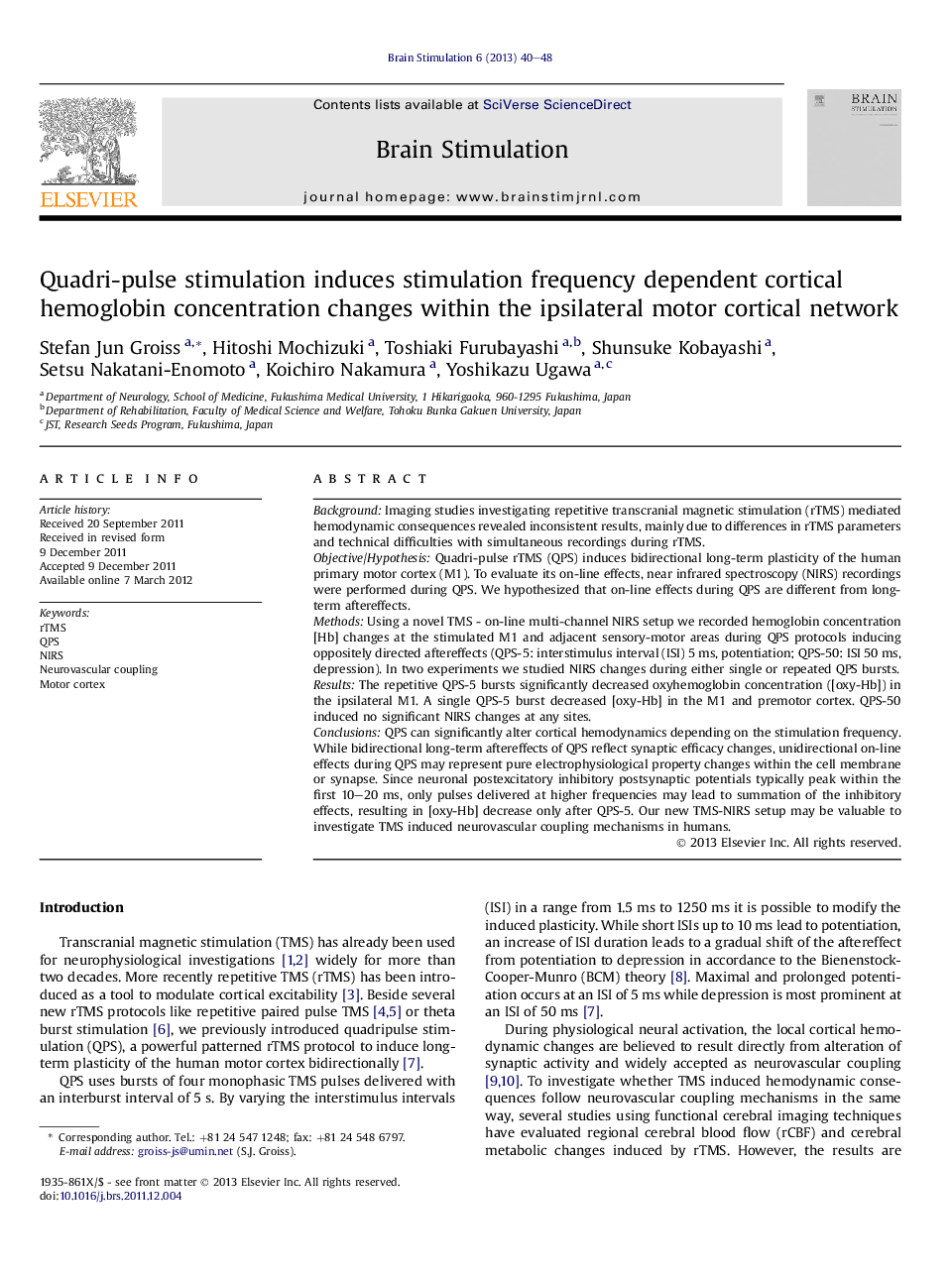| کد مقاله | کد نشریه | سال انتشار | مقاله انگلیسی | نسخه تمام متن |
|---|---|---|---|---|
| 3039073 | 1184686 | 2013 | 9 صفحه PDF | دانلود رایگان |

BackgroundImaging studies investigating repetitive transcranial magnetic stimulation (rTMS) mediated hemodynamic consequences revealed inconsistent results, mainly due to differences in rTMS parameters and technical difficulties with simultaneous recordings during rTMS.Objective/HypothesisQuadri-pulse rTMS (QPS) induces bidirectional long-term plasticity of the human primary motor cortex (M1). To evaluate its on-line effects, near infrared spectroscopy (NIRS) recordings were performed during QPS. We hypothesized that on-line effects during QPS are different from long-term aftereffects.MethodsUsing a novel TMS - on-line multi-channel NIRS setup we recorded hemoglobin concentration [Hb] changes at the stimulated M1 and adjacent sensory-motor areas during QPS protocols inducing oppositely directed aftereffects (QPS-5: interstimulus interval (ISI) 5 ms, potentiation; QPS-50: ISI 50 ms, depression). In two experiments we studied NIRS changes during either single or repeated QPS bursts.ResultsThe repetitive QPS-5 bursts significantly decreased oxyhemoglobin concentration ([oxy-Hb]) in the ipsilateral M1. A single QPS-5 burst decreased [oxy-Hb] in the M1 and premotor cortex. QPS-50 induced no significant NIRS changes at any sites.ConclusionsQPS can significantly alter cortical hemodynamics depending on the stimulation frequency. While bidirectional long-term aftereffects of QPS reflect synaptic efficacy changes, unidirectional on-line effects during QPS may represent pure electrophysiological property changes within the cell membrane or synapse. Since neuronal postexcitatory inhibitory postsynaptic potentials typically peak within the first 10–20 ms, only pulses delivered at higher frequencies may lead to summation of the inhibitory effects, resulting in [oxy-Hb] decrease only after QPS-5. Our new TMS-NIRS setup may be valuable to investigate TMS induced neurovascular coupling mechanisms in humans.
Journal: Brain Stimulation - Volume 6, Issue 1, January 2013, Pages 40–48